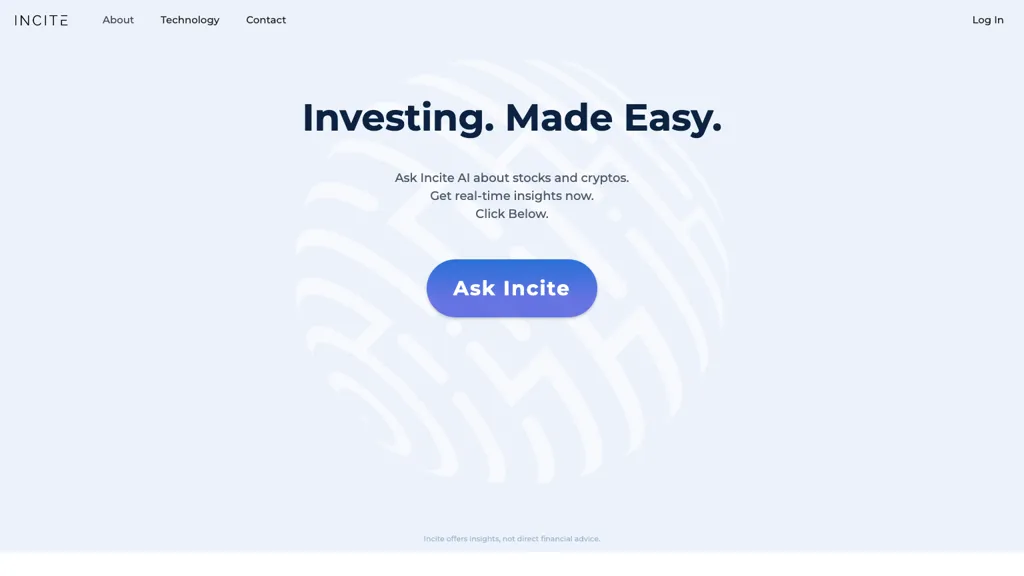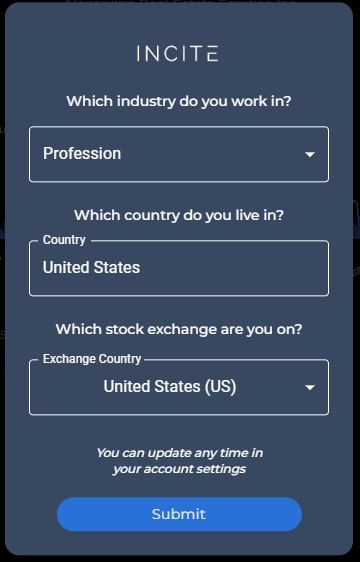To ensure accurate and reliable insight, it is important to examine the accuracy of data sources as well as AI-driven trading platforms for stocks. Insufficient quality data can result in inaccurate predictions and financial losses. It could also lead to suspicion about the platform. Here are the 10 best ways to assess sources and data quality:
1. Verify the sources of data
Examine the sources of the information. Make sure that the platform is based on reliable, well-known sources of data (e.g. Bloomberg Reuters Morningstar, or stock exchanges such NYSE, NASDAQ).
Transparency. A platform that is transparent must reveal all the sources of its data and update them regularly.
Avoid dependency on one source: Trustworthy platforms often aggregate data from several sources to reduce mistakes and bias.
2. Assess Data Freshness
Real-time or delayed data? Determine whether the platform provides delayed or real-time data. Real-time trading requires real-time data, whereas delayed data is enough for long-term analysis.
Check the frequency of updating information (e.g. hourly minutes by minutes or daily).
The accuracy of data from the past: Check to ensure that data is uniform and free of any anomalies or gaps.
3. Evaluate Data Completeness
Find out if there is missing information Look for tickers that are missing or financial statements, as well gaps in the historical data.
Coverage: Make sure that the trading platform is able to support an extensive range of the indices and stocks relevant to your plan.
Corporate actions: Make sure that your platform allows stock splits and dividends as well as mergers and other corporate actions.
4. Accuracy of Test Data
Cross-verify data : Compare the platform data with that of other trustworthy sources to ensure that the data is consistent.
Search for errors by looking at excessive financial data or outliers.
Backtesting: You may use old data to evaluate trading strategies. Verify that they are in line with your expectations.
5. Measure Data Granularity
Level of detail: Ensure the platform has granular information including intraday price and volumes spreads, bid-ask spreads and the depth of an order book.
Financial metrics: Make sure that the platform has complete financial statements (including income statement, balance sheets and cash flow as well as important ratios (such as P/E, ROE, and P/B. ).
6. Check for Data Cleaning & Preprocessing
Normalization of data is crucial to ensure consistency.
Handling outliers (handling anomalies): Verify that the platform is handling anomalies and outliers.
Incorrect Data: Verify whether the platform uses reliable methods in order to add data points that are not being accounted for.
7. Assess the consistency of data
Timezone alignment - Make sure that all data is aligned to the same local time zone in order to avoid discrepancies.
Format consistency: Make sure that the data is presented in the same format.
Cross-market uniformity: Make sure that data from multiple exchanges or markets are in harmony.
8. Determine the relevancy of data
Relevance in your trading strategy. Ensure that the data corresponds to your style of trading.
Selecting features: Determine if the platform includes pertinent features (e.g., sentiment analysis, macroeconomic indicators or news data) that enhance the accuracy of predictions.
9. Examine Data Security and Integrity
Data encryption: Check that the platform utilizes encryption to protect data when it is stored and transmitted.
Tamper-proofing (proof against tampering): Check to make sure the data was not altered or manipulated by the computer.
Compliance: Check that the platform complies the rules for data protection (e.g. GDPR, CCPA).
10. Transparency Model for AI Platform Tested
Explainability: Ensure the platform gives insight on the way in which the AI model uses the data to make predictions.
Bias detection - Examine to see if your platform actively monitors data and models for biases.
Performance metrics: Determine the accuracy of the platform by looking at its history, performance metrics, and recall metrics (e.g. precision, accuracy).
Bonus Tips
Reputation and reviews of users Check out the user feedback and reviews in order to assess the reliability of the platform and the quality of data.
Trial time. You can try the demo or trial for free to experience the features of the platform.
Customer support: Make sure the platform provides robust assistance for issues related to data.
If you follow these guidelines, you can better assess the accuracy of data and the sources of AI stock prediction platforms, ensuring you make well-informed and trustworthy trading decisions. See the best stock ai url for blog examples including using ai to trade stocks, ai for stock trading, options ai, options ai, investing ai, best ai for trading, options ai, ai trading, best ai stock trading bot free, ai for stock trading and more.

Top 10 Tips To Assess The Risk Management Capabilities Of Ai Stock-Predicting/Analyzing Platforms
Risk management is a crucial aspect of any AI trading platform for predicting or analyzing stocks that helps safeguard your capital and reduce the risk of losses. A platform with robust risk management tools will help you navigate uncertain markets, and make better decisions. Here are the top 10 suggestions for assessing the risks management capabilities of these platforms:
1. Examine Stop-Loss and Take Profit Features
Level that you can customize: You should be able to modify the stop-loss/take-profit levels of the individual strategies and trades.
Trailing stops: Find out if your platform supports trailing stops that are automatically adjusted as the market changes in your direction.
If the platform provides the option of a stop-loss order that guarantees your position is closed to the price specified in markets that are volatile and you are assured of a successful trade.
2. Measure Positions Tools
Fixed amount: Make sure that the platform lets you define position sizes based on a fixed monetary amount.
Percentage of portfolio: Check whether you are able to set the size of your positions in percentages of your overall portfolio to control risk in a proportional manner.
Risk-reward Ratio: Verify that the platform supports setting risk-reward levels for each individual.
3. Check for Diversification Assistance
Multi-asset Trading: To diversify your investment portfolio, ensure that the platform you select supports trading in multiple asset classes.
Sector allocation: Make sure the platform has tools to monitor the exposure of different sectors.
Geographic diversification. Find out the platform you use allows you to trade on international markets. This will help spread the geographic risk.
4. Assess Margin and Leverage Controls
Margin requirements. Be aware of the requirements for margin prior to trading.
Find out if you can set limit on leverage to limit risk exposure.
Margin calls: Check if the platform sends out prompt notifications of margin calls to stop account liquidation.
5. Assessment Risk Analytics and reporting
Risk metrics - Make sure that your platform contains crucial risk metrics, such as the Sharpe ratio (or Value at Risk (VaR)), or drawdown (or value of portfolio).
Evaluation of scenarios: Make sure the platform you are using permits you to create market scenarios and assess the risks.
Performance reports: Ensure the platform gives you detailed reports on performance, including returns that are risk-adjusted.
6. Check for Real-Time Risk Monitoring
Portfolio monitoring - Make sure that the platform you select provides real-time monitoring so that your portfolio is secure.
Alerts: See if you are receiving real-time notifications regarding events that are associated with risk (e.g. stop-loss triggers and breach of margins).
Risk dashboards: Ensure your platform offers an adjustable risk dashboard that gives you a complete view of your profile.
7. Evaluation of Stress Testing and Backtesting
Stress testing. Make sure your platform allows for you to stress test the portfolio or strategy in extreme market circumstances.
Backtesting Check if platform supports backtesting using historical data to assess risk and performance.
Monte Carlo: Verify the platform's use Monte Carlo-based simulations to assess risk and modeling a range or possible outcomes.
8. Risk Management Regulations - Assess Compliance
Compliance with regulatory requirements: Ensure that your platform is in compliance with the relevant risk management regulations in Europe as well as the U.S. (e.g. MiFID II).
Best execution: Ensure that the platform follows the best execution methods. This will ensure that trades are executed according to the best price available to minimize the chance of slippage.
Transparency - See whether the platform has disclosed risks in a clear, transparent manner.
9. Check for User-Controlled Parameters
Custom risk rules - Make sure that the platform allows the user to set up your own risk management rules.
Automated Risk Controls: Determine whether the platform has the capability to automatically enforce the risk management policy that are based on parameters pre-defined.
Manual overrides: Make sure to check whether the platform supports manual overrides of automated risk controls in the event of emergencies.
Reviews of User Feedback and Case Studies
User reviews: Examine feedback from users and evaluate the effectiveness of the platform in managing risk.
Case studies: Search for case studies or testimonials which highlight the platform's capabilities in risk management.
Forums for communities. Check to see whether the platform has a lively user community, where traders can exchange strategies for risk management and tips.
Bonus Tips
Trial period: Use an unpaid trial or demo to try out the features of the platform for risk management in real-world scenarios.
Support for customers: Ensure that your platform has a robust assistance for any questions or issues related to risk management.
Look for educational sources.
If you follow these guidelines, you can determine the capabilities of an AI stock prediction/analyzing trading platform to manage risk. This will ensure you select a system that protects your capital, and minimizes any potential losses. Effective risk management tools are crucial to navigate unstable markets and achieving long-term trading success. View the recommended find for chart ai trading for blog recommendations including free ai tool for stock market india, ai investment tools, investing with ai, ai trading tool, ai options trading, ai for trading stocks, best ai for stock trading, ai for trading stocks, ai stock investing, ai share trading and more.
